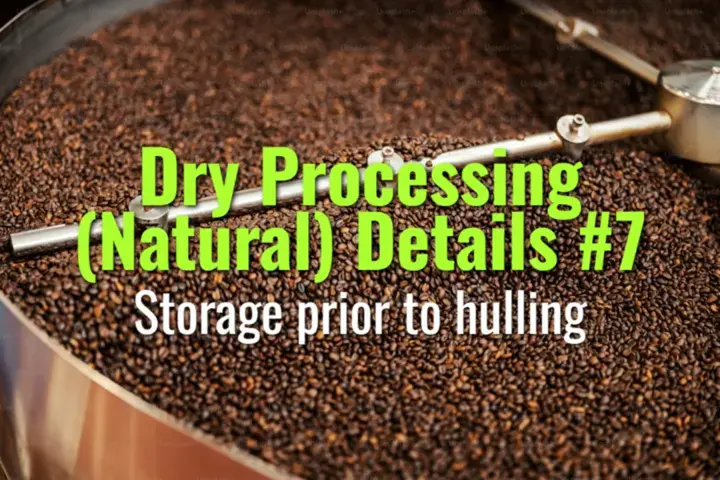Storage prior to hulling
This topic explains best practices for storing dried coffee cherries or parchment before hulling, and how storage conditions affect quality, safety, and market value.
- Coffee Basics Nerds
- 2 min read
Article 7 of 12 in Dry Processing (Natural) Details/

Importance of Storage
- After drying, natural coffees must be stored properly before hulling (removing husk/parchment).
- Poor storage leads to moisture reabsorption, mold, pest infestation, or flavor loss.
- Proper storage preserves quality until milling and export.
Storage Forms
- Dried whole cherries: Traditional in naturals, especially in Ethiopia and Yemen.
- Parchment coffee: Common in other regions; outer husk/parchment remains until milling.
Key Storage Parameters
1. Moisture Content
- Must be 10–12% before storage.
- Higher moisture → mold, mycotoxins.
- Lower moisture → brittleness, loss of aromatic compounds.
2. Packaging
- Traditional: Jute or sisal bags—breathable but vulnerable to humidity.
- Modern: Hermetic bags (e.g., GrainPro) prevent moisture and pest entry.
- Bulk silos/containers: Used in large estates and cooperatives.
3. Environment
- Temperature: Cool and stable to prevent condensation.
- Humidity: Relative humidity < 65% to avoid rewetting.
- Ventilation: Prevents heat and moisture buildup.
- Cleanliness: Keep warehouses pest-free and sanitized.
Risks of Poor Storage
- Mold and ochratoxin contamination.
- Pest damage (weevils, rodents).
- Absorption of odors (chemicals, smoke, fuel).
- Cup quality loss: musty, flat, or faded flavors.
Storage Duration
- Properly stored naturals can last up to 12 months with minimal quality loss.
- Specialty lots ideally exported within 6–9 months for peak freshness.
Best Practices
- Monitor warehouse temperature and humidity.
- Use pallets to keep bags off the ground.
- Rotate stock (first in, first out).
- Regularly cup stored lots to track quality.
Lasting Importance
Storage prior to hulling is a critical control point in natural processing. Proper storage safeguards the farmer’s investment, ensuring that carefully dried cherries maintain stability, safety, and flavor integrity until final milling and export.
You might also like:
- Tags:
- Lasting Importance
- Best Practices
- Cup Quality
- Moisture Content
- Flavor Integrity
- Natural Processing
- Rotate Stock
- Risks Poor
- Aromatic Compounds
- Specialty Lots
- Hermetic Bags
- Temperature Humidity
- Poor Storage
- Quality Lasting
- Dried Cherries
- Critical Control
- Bags Grainpro
- Parchment Coffee
- Quality Loss
- Relative Humidity
- Large Estates
- Cool Stable
- Temperature Cool
- Pest Free